-
 Bitcoin
Bitcoin $108,192.4840
-0.79% -
 Ethereum
Ethereum $2,520.0996
-1.16% -
 Tether USDt
Tether USDt $1.0002
-0.01% -
 XRP
XRP $2.2216
-0.44% -
 BNB
BNB $655.3498
-0.46% -
 Solana
Solana $148.0291
-1.58% -
 USDC
USDC $0.9999
0.00% -
 TRON
TRON $0.2831
-1.37% -
 Dogecoin
Dogecoin $0.1642
-1.68% -
 Cardano
Cardano $0.5748
-1.24% -
 Hyperliquid
Hyperliquid $39.4087
1.28% -
 Sui
Sui $2.9157
-0.36% -
 Bitcoin Cash
Bitcoin Cash $483.5621
0.38% -
 Chainlink
Chainlink $13.2143
-1.13% -
 UNUS SED LEO
UNUS SED LEO $9.0623
0.20% -
 Avalanche
Avalanche $17.8302
-1.40% -
 Stellar
Stellar $0.2374
-1.09% -
 Toncoin
Toncoin $2.7496
-2.20% -
 Shiba Inu
Shiba Inu $0.0...01147
-0.83% -
 Hedera
Hedera $0.1557
0.09% -
 Litecoin
Litecoin $86.3775
-1.75% -
 Monero
Monero $312.5454
-2.83% -
 Polkadot
Polkadot $3.3663
-2.25% -
 Dai
Dai $1.0000
0.01% -
 Ethena USDe
Ethena USDe $1.0001
0.00% -
 Bitget Token
Bitget Token $4.4127
-1.15% -
 Uniswap
Uniswap $6.9598
-5.53% -
 Pepe
Pepe $0.0...09815
0.25% -
 Aave
Aave $270.5779
0.33% -
 Pi
Pi $0.4678
-3.14%
What does the increase in the number of holding addresses of SHIB mean? Is it a bullish signal?
An increase in SHIB holding addresses may signal growing interest, but it's not a definitive bullish sign without considering trading volume and market sentiment.
Apr 29, 2025 at 09:49 pm
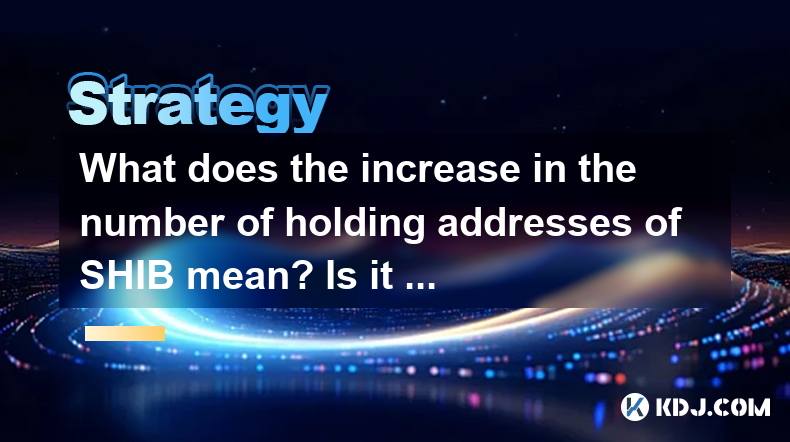
The increase in the number of holding addresses of SHIB (Shiba Inu) is a significant metric that can provide insights into the token's market dynamics and investor sentiment. When more addresses are holding SHIB, it often indicates growing interest and confidence in the cryptocurrency. But is this increase truly a bullish signal? Let's delve into the details.
Understanding Holding Addresses
Holding addresses refer to the unique blockchain addresses that have a non-zero balance of SHIB. An increase in these addresses suggests that more individuals or entities are acquiring and holding the token. This can be interpreted in several ways, but it generally points to an expanding user base and possibly increasing demand.
The Bullish Signal Debate
The notion that an increase in holding addresses is a bullish signal stems from the idea that more people holding a cryptocurrency could lead to a higher demand and, consequently, a potential price increase. However, this correlation is not always straightforward. It's essential to consider other factors such as trading volume, market sentiment, and overall market conditions.
Factors Influencing Holding Addresses
Several factors can influence the number of holding addresses for SHIB. New adopters entering the market and buying SHIB can lead to an increase in holding addresses. Additionally, long-term holders who accumulate more SHIB can also contribute to this metric. Conversely, whales (large holders) distributing their holdings to smaller addresses can artificially inflate the number of holding addresses without necessarily indicating a bullish trend.
Analyzing the Data
To accurately assess whether an increase in holding addresses is a bullish signal, it's crucial to analyze the data in context. For instance, if the increase in holding addresses is accompanied by a rise in trading volume and positive market sentiment, it could indeed be a bullish signal. However, if the increase is due to whales distributing their holdings or if it occurs during a period of market downturn, the signal might be less reliable.
Comparing with Other Metrics
It's also beneficial to compare the increase in holding addresses with other metrics such as active addresses, transaction volume, and market capitalization. For example, if the number of holding addresses is increasing, but the number of active addresses (addresses that are actively transacting) is decreasing, it might suggest that new holders are buying and holding rather than actively trading, which could indicate a more cautious or long-term investment approach.
Case Studies and Historical Data
Looking at historical data and case studies can provide further insights. For instance, if past increases in holding addresses have consistently led to price increases, it might strengthen the case for considering it a bullish signal. Conversely, if there have been instances where an increase in holding addresses did not result in a price increase, it might suggest that other factors are more influential.
The Role of Community and Sentiment
The SHIB community and overall sentiment play a significant role in interpreting the increase in holding addresses. If the community is actively promoting SHIB and there's a positive sentiment around it, an increase in holding addresses might be more likely to be a bullish signal. Conversely, if the community is experiencing FUD (Fear, Uncertainty, and Doubt), the same increase might not be as bullish.
Potential Pitfalls and Misinterpretations
It's important to be aware of potential pitfalls and misinterpretations when analyzing the increase in holding addresses. For instance, address clustering (where multiple addresses are controlled by the same entity) can lead to an overestimation of the actual number of unique holders. Additionally, airdrops and token distribution events can temporarily inflate the number of holding addresses without necessarily indicating a bullish trend.
Conclusion and Considerations
While an increase in the number of holding addresses of SHIB can be seen as a positive development, it is not a definitive bullish signal on its own. It should be considered alongside other metrics and market conditions to gain a more comprehensive understanding of SHIB's market dynamics. Investors and analysts should remain cautious and use a multi-faceted approach when interpreting such data.
Frequently Asked Questions
Q1: How can I track the number of holding addresses for SHIB?
- You can track the number of holding addresses for SHIB using various blockchain analytics platforms such as CoinMetrics, CryptoQuant, or Glassnode. These platforms provide detailed on-chain data, including the number of addresses holding a specific cryptocurrency.
Q2: Are there other cryptocurrencies where an increase in holding addresses is considered a bullish signal?
- Yes, an increase in holding addresses is often considered a bullish signal for many cryptocurrencies, including Bitcoin and Ethereum. However, the significance of this metric can vary depending on the specific cryptocurrency and market conditions.
Q3: Can the increase in holding addresses be manipulated?
- Yes, the increase in holding addresses can be manipulated through tactics such as address clustering or distribution of tokens to multiple addresses. It's important for investors to be aware of these potential manipulations and consider them when interpreting the data.
Q4: How often should I check the number of holding addresses for SHIB?
- It's advisable to check the number of holding addresses for SHIB regularly, such as weekly or monthly, to stay updated on trends. However, frequent checking (daily) might lead to over-analysis and should be avoided unless you are actively trading.
Disclaimer:info@kdj.com
The information provided is not trading advice. kdj.com does not assume any responsibility for any investments made based on the information provided in this article. Cryptocurrencies are highly volatile and it is highly recommended that you invest with caution after thorough research!
If you believe that the content used on this website infringes your copyright, please contact us immediately (info@kdj.com) and we will delete it promptly.
- Bitcoin's Pattern Break: Are HODLers the Key to the Next Surge?
- 2025-07-04 18:50:12
- Bitcoin Price, Trump's Bill, and the $150K Dream: A NYC Take
- 2025-07-04 19:50:12
- Ethereum, LILPEPE, and the July Bounce: Will Pepe Steal ETH's Thunder?
- 2025-07-04 19:10:12
- Binance Institutional Loans: Unlocking 4x Leverage and Zero Interest for Whales
- 2025-07-04 19:15:12
- Bitcoin Bull Run: Analysts Eye Peak in Late 2025?
- 2025-07-04 19:20:13
- Pepe Indicators, Bullish Forecast: Can the Meme Coin Rally?
- 2025-07-04 19:25:12
Related knowledge
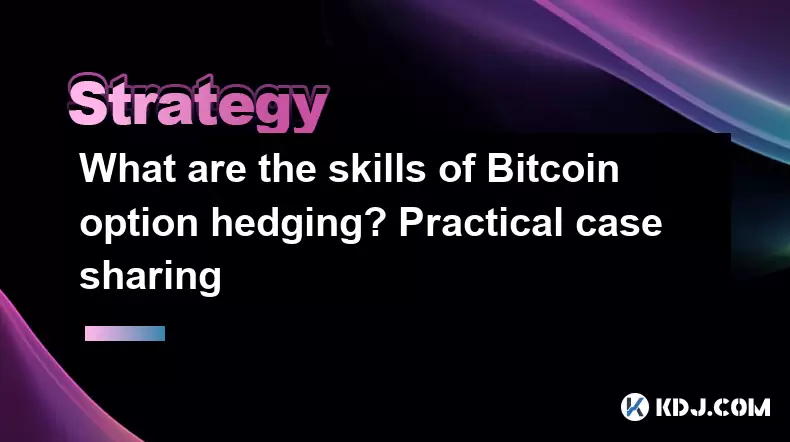
What are the skills of Bitcoin option hedging? Practical case sharing
Jun 24,2025 at 04:01pm
Understanding Bitcoin Option HedgingBitcoin option hedging is a risk management strategy used by traders and investors to protect their positions in the volatile cryptocurrency market. By using options, individuals can limit potential losses while retaining the opportunity for profit. In essence, it allows one to insulate against adverse price movements...
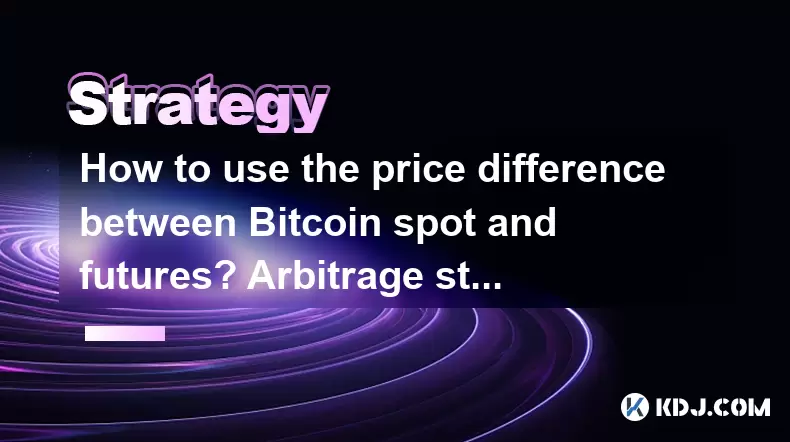
How to use the price difference between Bitcoin spot and futures? Arbitrage strategy
Jun 20,2025 at 02:56pm
Understanding Bitcoin Spot and Futures MarketsTo effectively leverage arbitrage opportunities between Bitcoin spot and futures markets, it's essential to understand the fundamental differences between these two types of markets. The spot market refers to the direct buying and selling of Bitcoin for immediate delivery at the current market price. In cont...

How to increase DeFi lending income? Strategy and risk analysis
Jun 24,2025 at 02:08pm
Understanding DeFi Lending and Its Income PotentialDeFi (Decentralized Finance) lending has emerged as a popular way to earn passive income in the cryptocurrency space. Unlike traditional banking systems, DeFi lending platforms allow users to lend their crypto assets directly to borrowers without intermediaries. The lenders earn interest based on the su...
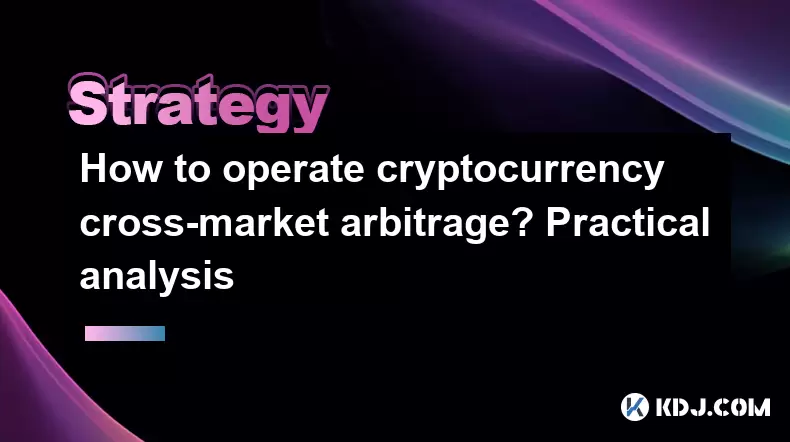
How to operate cryptocurrency cross-market arbitrage? Practical analysis
Jun 23,2025 at 04:01am
Understanding Cryptocurrency Cross-Market ArbitrageCryptocurrency cross-market arbitrage involves taking advantage of price differences for the same digital asset across different exchanges. The core idea is to buy low on one exchange and sell high on another, capturing the profit from the discrepancy. This strategy relies heavily on real-time market da...

How to make profits from high-frequency cryptocurrency trading? Sharing core skills
Jun 19,2025 at 05:07pm
Understanding High-Frequency Cryptocurrency TradingHigh-frequency trading (HFT) in the cryptocurrency market involves executing a large number of trades at extremely fast speeds, often within milliseconds. This method relies on small price discrepancies across exchanges or within a single exchange’s order book. Traders use complex algorithms and ultra-l...
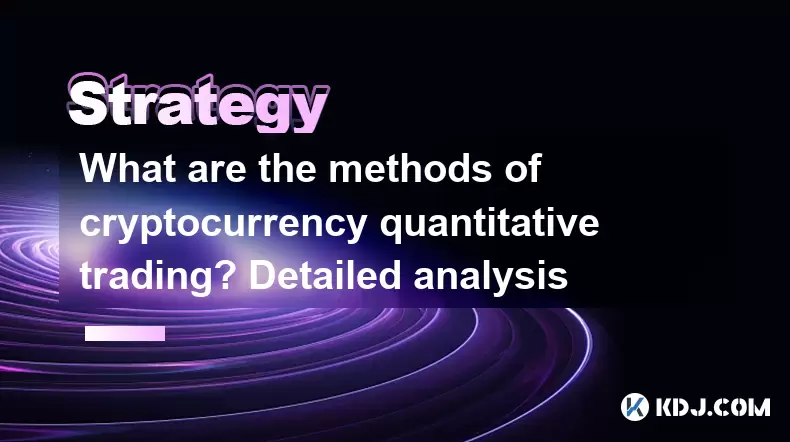
What are the methods of cryptocurrency quantitative trading? Detailed analysis
Jun 22,2025 at 11:07pm
Understanding the Core of Cryptocurrency Quantitative TradingCryptocurrency quantitative trading refers to the use of mathematical models and algorithms to execute trades in the digital asset market. Unlike traditional discretionary trading, which relies heavily on human judgment, quantitative trading leverages data-driven strategies to identify profita...

What are the skills of Bitcoin option hedging? Practical case sharing
Jun 24,2025 at 04:01pm
Understanding Bitcoin Option HedgingBitcoin option hedging is a risk management strategy used by traders and investors to protect their positions in the volatile cryptocurrency market. By using options, individuals can limit potential losses while retaining the opportunity for profit. In essence, it allows one to insulate against adverse price movements...

How to use the price difference between Bitcoin spot and futures? Arbitrage strategy
Jun 20,2025 at 02:56pm
Understanding Bitcoin Spot and Futures MarketsTo effectively leverage arbitrage opportunities between Bitcoin spot and futures markets, it's essential to understand the fundamental differences between these two types of markets. The spot market refers to the direct buying and selling of Bitcoin for immediate delivery at the current market price. In cont...

How to increase DeFi lending income? Strategy and risk analysis
Jun 24,2025 at 02:08pm
Understanding DeFi Lending and Its Income PotentialDeFi (Decentralized Finance) lending has emerged as a popular way to earn passive income in the cryptocurrency space. Unlike traditional banking systems, DeFi lending platforms allow users to lend their crypto assets directly to borrowers without intermediaries. The lenders earn interest based on the su...

How to operate cryptocurrency cross-market arbitrage? Practical analysis
Jun 23,2025 at 04:01am
Understanding Cryptocurrency Cross-Market ArbitrageCryptocurrency cross-market arbitrage involves taking advantage of price differences for the same digital asset across different exchanges. The core idea is to buy low on one exchange and sell high on another, capturing the profit from the discrepancy. This strategy relies heavily on real-time market da...

How to make profits from high-frequency cryptocurrency trading? Sharing core skills
Jun 19,2025 at 05:07pm
Understanding High-Frequency Cryptocurrency TradingHigh-frequency trading (HFT) in the cryptocurrency market involves executing a large number of trades at extremely fast speeds, often within milliseconds. This method relies on small price discrepancies across exchanges or within a single exchange’s order book. Traders use complex algorithms and ultra-l...

What are the methods of cryptocurrency quantitative trading? Detailed analysis
Jun 22,2025 at 11:07pm
Understanding the Core of Cryptocurrency Quantitative TradingCryptocurrency quantitative trading refers to the use of mathematical models and algorithms to execute trades in the digital asset market. Unlike traditional discretionary trading, which relies heavily on human judgment, quantitative trading leverages data-driven strategies to identify profita...
See all articles

























































































